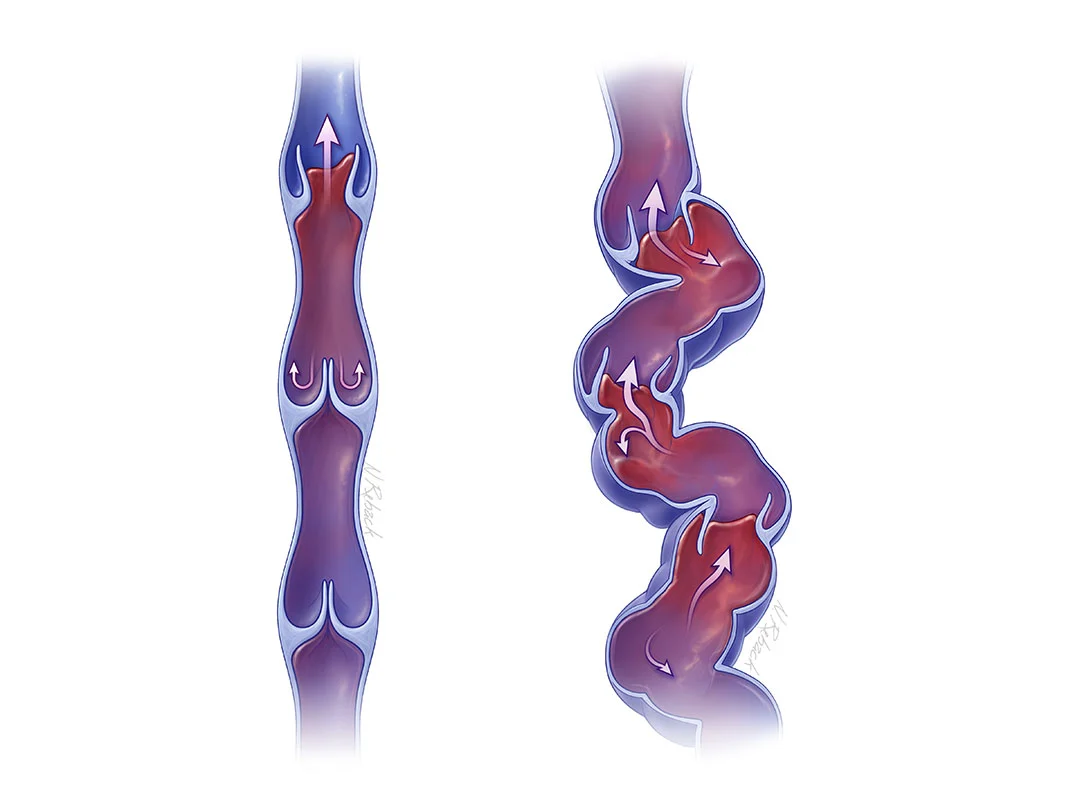If the veins in your legs that are enlarged, clearly visible under your skin, and twisted or bulging, it’s called varicose veins.
It is important to diagnose varicose veins as early as possible. This way you can prevent the disease from progressing and avoid more serious complications.
Varicose veins are dilated and tortuous veins (3 mm in diameter or larger) that appear as convoluted swellings. Sometimes varicose veins protrude as knot-like bulges on the surface of the skin. Nearly 30% of the world’s population develop varicose veins. The risk for developing varicose veins is higher for women and increases with age, obesity, lack of exercise, pregnancy, or a genetic predisposition.
Varicose veins can form in any superficial vein in your body. The veins in the lower extremities (foot, calf, thigh, or entire leg) are most commonly affected. Varicose veins can be painful or, on the contrary, completely painless. When symptoms are present, they can include ankle and leg swelling, heaviness, fullness, aching, restlessness, fatigue, pain, cramps, and itching. After sitting or standing for a long time these symptoms can worsen due to increased blood levels and pressure in the veins of your lower body. High temperatures can aggravate these symptoms – varicose veins can trouble you more in the summer.
Why is early diagnosis of varicose veins important?
Early and correct diagnosis of varicose veins is essential to prevent further worsening of venous disease. If varicose veins are left untreated, your quality of life can be negatively affected through discomfort and pain, swelling of your legs (edema), and skin changes. In addition, varicose veins increase the risk for further severe complications such as thrombophlebitis (inflammatory process causing a blood clot to form), deep vein thrombosis (DVT), variceal bleeding, ulceration, and more.
If you experience discomfort from varicose vein symptoms, contact Vein Specialists of the Carolinas today.
“All We Do Is Veins, All Day Every Day.”

